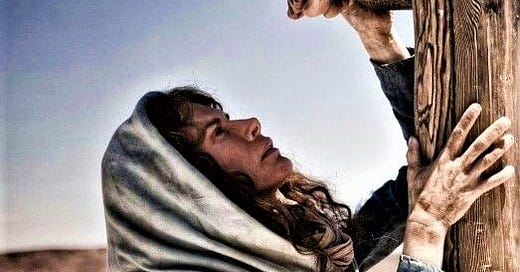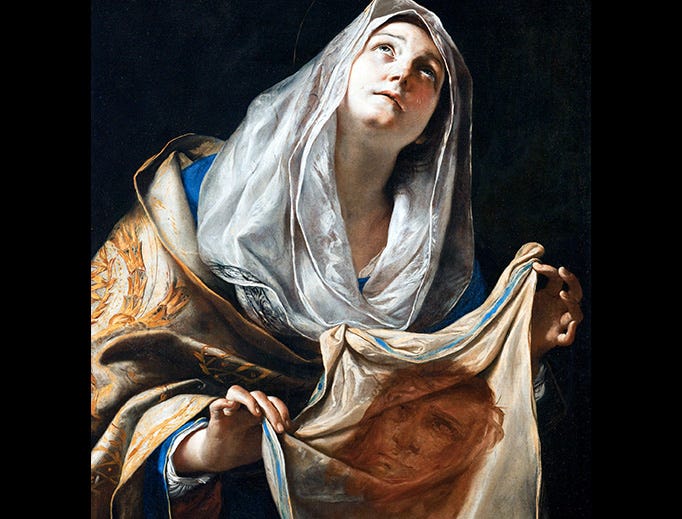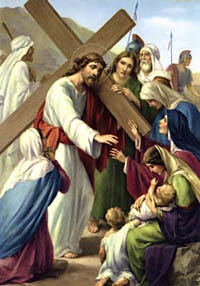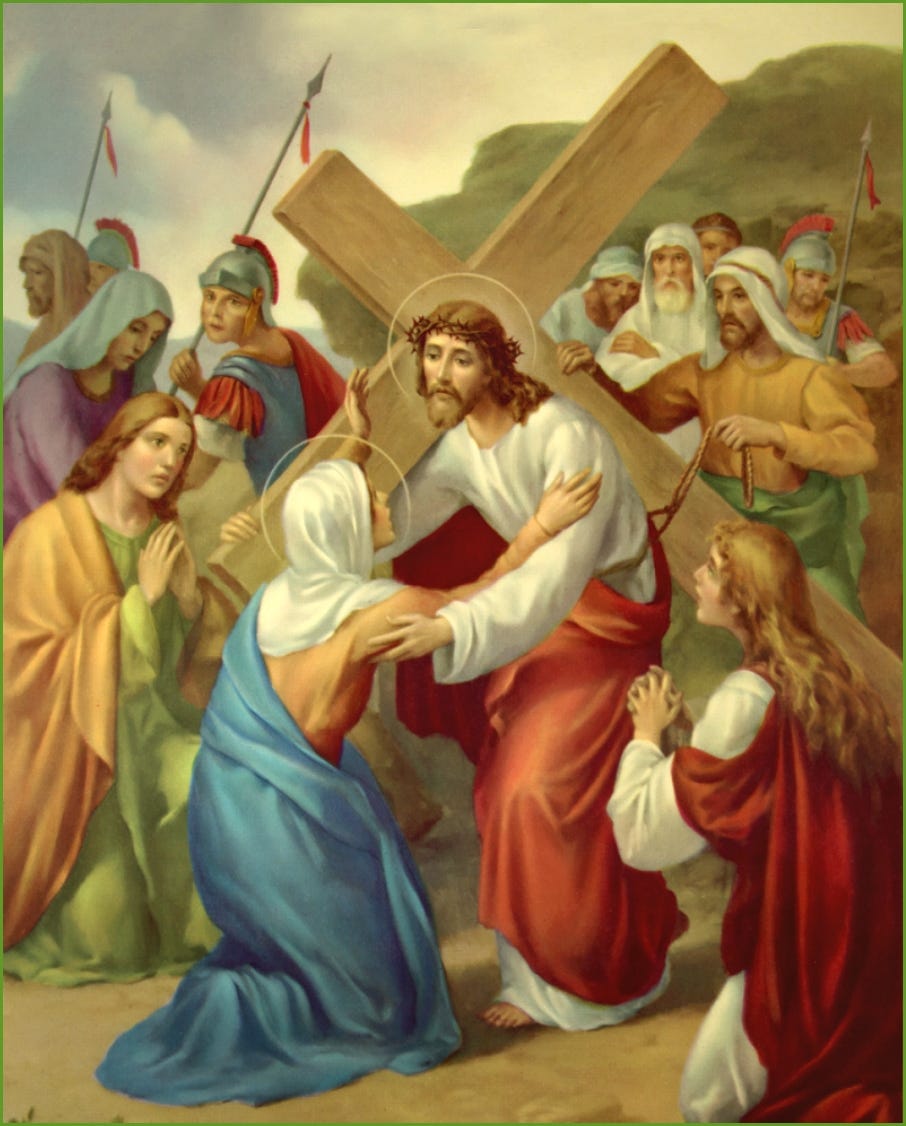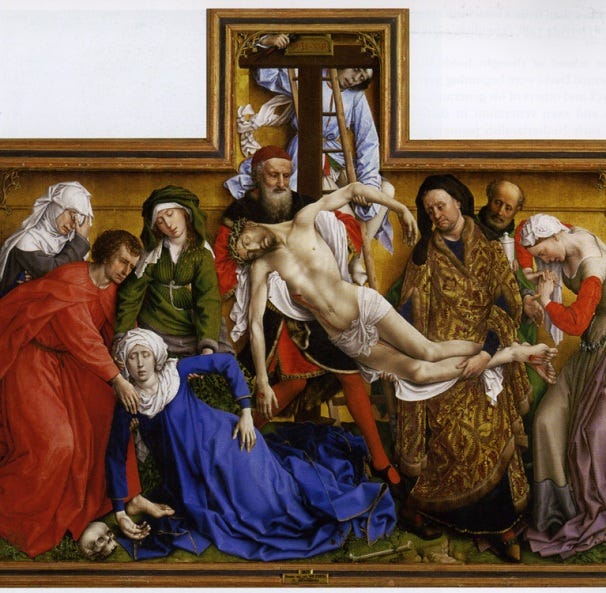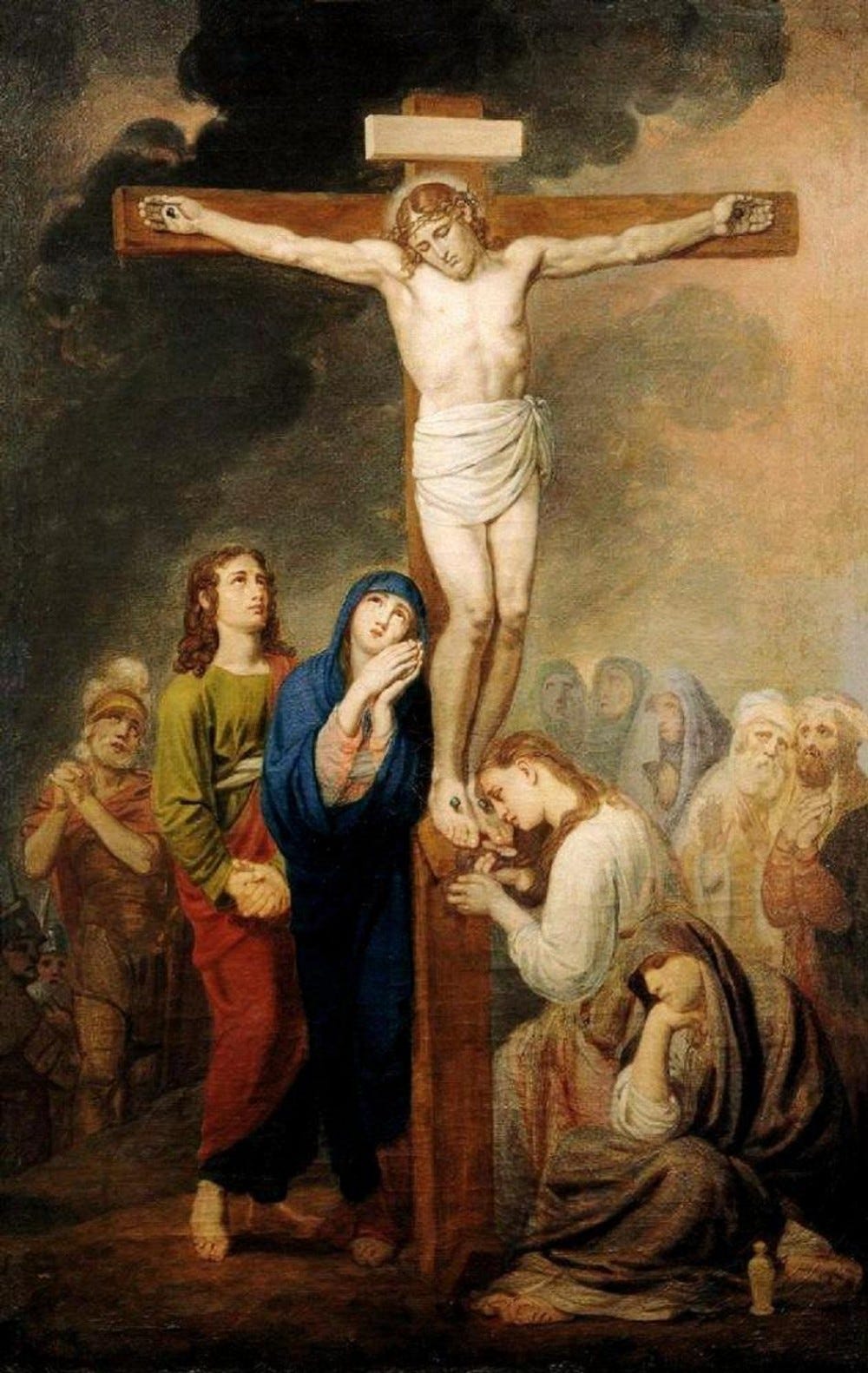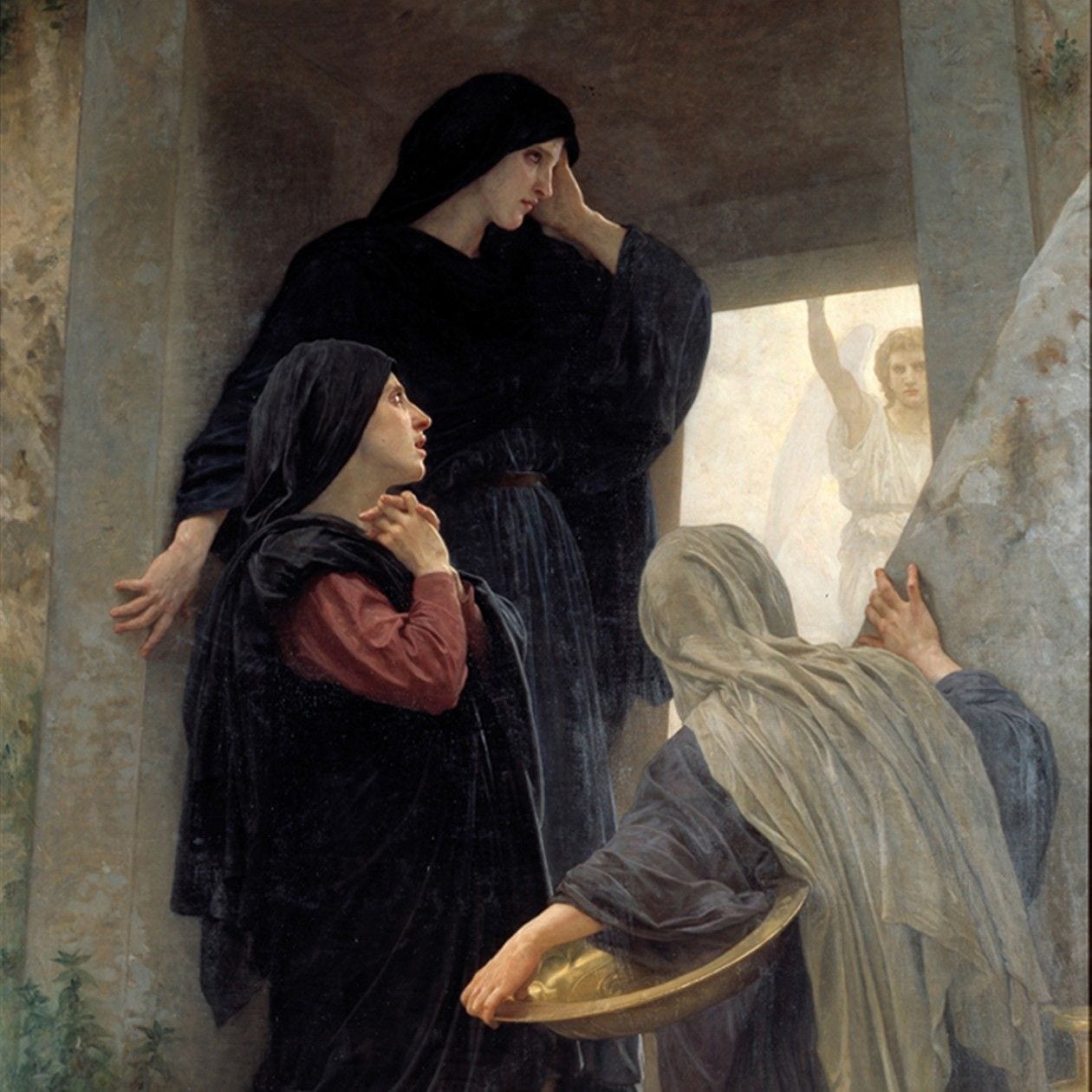The Women at the Foot of the Cross
This year during Lent I have been reflecting a lot more on the role of women in the Easter story. They are everywhere throughout, woven into the tapestry of Jesus Trial, Passion, Death and Resurrection.
I hope that this article will help you see the honour that God bestowed on women for playing such a great role in the most important story of Christianity. Let these brave, strong, and beautiful women be an inspiration to you this Easter. I have also added in some great prayers by Pope Benedict XVI from the time he was Cardinal and leading the Stations of the Cross in the Colosseum on Good Friday. I hope that they help you to dig deeper into the Mystery of Easter just as they helped me when writing this article for you.
The wife of Pontius Pilate: Claudia Procula
I thought it was important to remember Pilate’s wife, Claudia Procula, who is often forgotten during the Easter Story. The Eastern churches actually venerate her as a saint.
In the Gospel of Matthew we learn that Claudia Procula has a dream about Jesus, the man her husband has been asked to speak judgement over:
Besides, while he [Pilate] was sitting on the judgement seat, his wife sent word to him, “Have nothing to do with that righteous man, for I have suffered much over him today in a dream.”
Matthew 27:19 RSVCE
She intercedes for Jesus as only a wife can with her husband. Talking of her distress and Jesus’ righteousness. what was her dream about? What worried Claudia Procula so much that she interrupted her husband while he was presiding over the court? St Augustine has argued that her dream was a divinely inspired warning to not judge Jesus. Some say that she dreamed of countless Christians reciting the sub Pontio Pilato from the Apostle’s Creed, forever binding her husband to this faithful day and the Judgement of Christ.
Either way, Claudia was so moved by compassion for Jesus that she decided to plead with her husband to not speak judgement over him. While unsuccessful in saving Jesus’ life, she herself converted to Catholicism after the crucifixion.
St Veronica
One of the women that Jesus meets along his way is Saint Veronica. Her great act of kindness and compassion is immortalised in the Sixth Station of the Cross: Veronica wipes the face of Jesus.
Veronica bravely steps forward, undeterred by the soldiers and the angry crowd. In her yearning to see the true face of God, a yearning that we all have, she stretches out her hands to Jesus when all of his disciples have pulled away. Lovingly she wipes his bruised and bloody face and underneath it reveals the true face of God in all its splendour and goodness. This face is imprinted on her heart as much as on her veil that can still be venerated today in the Vatican.
When all others only saw a bloodied and bruised criminal, Veronica saw with her heart. Her love for God revealed to her the truth about Jesus' identity.
I want to invite you to pray this prayer by Pope Benedict XVI, written when he was still a Cardinal as a meditation on the Sixth Station of the Cross:
Lord, grant us restless hearts, hearts which seek your face. Keep us from the blindness of heart which sees only the surface of things. Give us the simplicity and purity which allow us to recognize your presence in the world. When we are not able to accomplish great things, grant us the courage which is born of humility and goodness. Impress your face on our hearts. May we encounter you along the way and show your image to the world.
Cardinal Joseph Ratzinger
Good Friday 2005, at the Colosseum in Rome
The Daughters of Jerusalem
And there followed him a great multitude of the people and of women who bewailed and lamented him. But Jesus turned to them and said: “Daughters of Jerusalem, do not weep for me, but weep for yourselves and for your children.”
Luke 23: 27-28
This is how the Daughters of Jerusalem are first introduced to us in scripture.
They are so moved by Jesus' suffering that they shed tears openly and weep for the condemned man. However, Jesus, seemingly admonishes them, saying:
“Daughters of Jerusalem, do not weep for me, but weep for yourselves and for your children.” Matthew 27:19 RSVCE
He is moved by their compassion but his words are also a stark reminder of the reason he is being crucified: our sin. The women should weep for themselves and for their children because they will, in time, come to realise that their sin is what nailed Jesus to the Cross.
Just as we have to come to terms with this harsh reality and heavy responsibility, so Jesus calls on the daughters of Jerusalem to realise their full part in his Passion.
This does not mean we should despair and succumb to self-flagellation. Rather we should recognise our sin and truly convert our hearts and our lives. Let our horror and tears at the suffering of Jesus be the catalyst for true and deep change in ourselves.
Lord, to the weeping women you spoke of repentance and the Day of Judgement, when all of us will stand before your face: before you, the Judge of the world. You call us to leave behind the trivialization of evil, which salves our consciences and allows us to carry on as before. You show us the seriousness of our responsibility, the danger of our being found guilty and without excuse on the Day of Judgement. Grant that we may not simply walk at your side, with nothing to offer other than compassionate words. Convert us and give us new life. Grant that in the end we will not be dry wood, but living branches in you, the true vine, bearing fruit for eternal life.
Cardinal Joseph Ratzinger
Good Friday 2005, at the Colosseum in Rome
Mary, Mother of God
Of course the most central woman within the Passion is Mary. Just as always, she is right by his side as any good mother would be, comforting him and suffering with him.
Just like Jesus, Mary had an idea of the suffering to come. Ever since the prophecy of Simeon she had waited for her heart to be pierced. When she saw her son rejected and condemned, she must have realised that the hour had come, yet she did not flee, she did not abandon him.
How desperate must Mary have felt that she could not shelter Christ anymore as she had done for nine months in her sacred womb. Instead she had to witness him be stripped and scourged, and carry the cross under immense pain and then be crucified.
In her motherly strength and bravery she never leaves his side. At the Fourth Station of the Cross we see Jesus encounter his mother. O the joy, the consolation and comfort it must have been for him to see his mother. The dear mother that had comforted and consoled him all his life, that had borne him out of total faith and loved him as only a mother can. It is difficult for humans to comprehend the burden and pain Christ feels on the Cross under the weight of our sins, but Mary’s pain is relatable to any woman. Even if you do not have a child, you can imagine the joy of having one and the total despair of losing it. And even that attempt only scratches the surface of that pain.
I want you for a moment to pause and look at the panel painting above.
The woman in blue is Mary, see how her movements are mirroring Christ’s as he is taken down from the cross? That is because Mary is the Mirror of the Church and of Christ. All his suffering she experienced with him. The link between a mother and child is profound, the cells of a baby can live on in the maternal brain for a long long time after the baby is born, creating a tangible biological bond.1 Mary and Jesus’ bond went even beyond that into the spiritual realm. The suffering she went through, just like Christ’s, is unbelievable. In this hour they were each other’s consolation and comfort, trusting God and his divine providence.
During his darkest moments, Jesus was comforted by his mother’s presence and in his great generosity he chose that moment to share her with us.
When Jesus saw his mother, and the disciple whom he loved standing near, he said to his mother, “Woman, behold, your son!” Then he said to the disciple, “Behold, your mother!” And from that hour the disciple took her to his own home.
John 19: 26-27 RSVCE
Even in her hour of suffering, her moment of greatest pain, Mary surrendered herself to Jesus and accepted that she would be the mother of humankind, the same humankind who had caused her Son’s death by their sin.
Mary’s gift is total and absolute. From the moment of the Annunciation she gave everything to God. Her witness to Jesus’ life and death is a great example to us all of the power of a holy woman.
Holy Mary, Mother of the Lord, you remained faithful when the disciples fled. Just as you believed when the angel announced to you what was incredible – that you were going to become the mother of the Most High - so too you believed at the hour of his greatest humiliation. Thus it was that, at the hour of the cross, at the hour of the darkest night of the world, you became Mother of believers, Mother of the Church. We pray to you: teach us to believe, and help us so that our faith may become the courage to serve and the gesture of a love which comes to help and knows how to share in suffering.
Cardinal Joseph Ratzinger
Good Friday 2005, at the Colosseum in Rome
The Three Mary’s
Mary, Mother of God was not the only Mary at the Foot of the Cross that day. In fact there were three Marys there.
But standing by the cross of Jesus were his mother, and his mother’s sister, Mary the wife of Clopas, and Mary Mag′dalene.
John 19: 25
In a special way these three women represent the core of womanhood. We have a mother, Mary of Nazareth, a sister, Mary of Clopas, and a daughter, Mary Magdalene.
We have already discussed the role of Mary, Mother of God. The presence of Mary of Clopas adds another layer to this scene. As an aunt she is there to stand by and comfort Mary but it would have still taken great bravery to stand with her sister as her son was condemned, first by the Sanhedrin and then by the Romans. Mary of Clopas shows a loyalty of sisterhood to Mary, and by extension Jesus, that is rarely seen nowadays. While there is much talk of sisterhood, there is little talk of what it takes to uphold female relationships. Clearly Mary of Clopas and Mary of Nazareth must have had a strong sisterly bond that was nurtured throughout their lives. Even in her darkest hour, Mary can count on her sister to be by her side and bear witness with her.
I refer here to Mary Magdalene as a daughter due to her close bond with Jesus and God. She represents the great many of us, the children of God who have fallen into sin and are trying their best to live a good life grounded in God. Mary Magdalene had been saved by Jesus when he cast out seven demons from her, and we assume that she followed him from that day. As a sinner and outcast she was disregarded by the people of her community, and being with Jesus and his disciples must have felt very special to her.
Just like so many women today, Mary Magdalene must have struggled with feelings of self-worth and whether or not she was lovable. By all accounts she had led a less than perfect life up until the point she encountered Jesus, and there were clearly spiritual, if not even physical, wounds that she had that he would have healed within her. This is why according to Benedict XVI Mary Magdalene calls Jesus “my hope”.1 He allowed her to be reborn and gave her a new future, a life of goodness and freedom from evil.
She is a great example of the power of God’s love and a symbol for all of us in our identity as Daughters of the King. We are well loved by our Heavenly Father and there is nothing we can do that will stop him from loving us. Even when we reject him, he welcomes us back with open arms when we are ready, just as he welcomed back Mary Magdalene.
Mary Magdalene recognised this great gift and that is probably why she, unlike the disciples, remained steadfast. She did not run and hide, she did not renounce Jesus, very likely she stayed by the side of Mary Mother of God for the whole of Jesus' Passion and looked on as a witness of his suffering.
Her pain as a daughter is portrayed beautifully in the art world by the fact that you can usually see her clutching the cross. She is right where she wants to be, at Jesus' feet, consoling and comforting him in his suffering.
Just like a loving daughter would never leave her father’s bedside in his hour of death, so Mary Magdalene wanted to be as close as possible to her Lord when he died for her on the Cross. She witnessed his great sacrifice and consoled him through her presence and prayer.
The women at the tomb
But Mary stood weeping outside the tomb, and as she wept she stooped to look into the tomb; and she saw two angels in white, sitting where the body of Jesus had lain, one at the head and one at the feet. They said to her, “Woman, why are you weeping?” She said to them, “Because they have taken away my Lord, and I do not know where they have laid him.” Saying this, she turned round and saw Jesus standing, but she did not know that it was Jesus. Jesus said to her, “Woman, why are you weeping? Whom do you seek?” Supposing him to be the gardener, she said to him, “Sir, if you have carried him away, tell me where you have laid him, and I will take him away.” Jesus said to her, “Mary.” She turned and said to him in Hebrew, “Rab-bo′ni!” (which means Teacher). Jesus said to her, “Do not hold me, for I have not yet ascended to the Father; but go to my brethren and say to them, I am ascending to my Father and your Father, to my God and your God.” Mary Magdalene went and said to the disciples, “I have seen the Lord”; and she told them that he had said these things to her.
John 20:11-18 RSVCE
What a truly glorious moment in Scripture. While the accounts differ slightly from Gospel to Gospel, a running theme of the Resurrection of Jesus is who he appeared to first: women. More specifically, Jesus appeared to Mary Magdalene first in the Gospel of St John. This is why St Thomas Aquinas called Mary Magdalene the ‘Apostle of the Apostles’ and said of her "Just as a woman had announced the words of death to the first man, so also a woman was the first to announce to the Apostles the words of life".2
How can we say that Catholicism, or Christianity in general, is a misogynistic religion when reading the Resurrection story? God’s love for women and Jesus' special relationship with the women that accompanied him during his ministry appears so clearly to me when I read these verses.
What is shown here is not an inclusion of the women in favour of the disciples, but a recognition of Jesus for the great capacity of love that women have. Jesus acknowledges that it was the women who remained faithful and steadfast during his Passion. They never left his sight, they bore witness to all his pain and suffering, they wept for him and consoled him through their witness of prayer and mere presence. These women showed a much higher tolerance for witnessing pain and suffering with Jesus than his disciples. The women loved him so much that they could not fathom abandoning him in his suffering. It is a witness to the total and complete love women have for those they truly care for. The fact that the women are at the tomb in the first place emphasises this love further. They are there to prepare the body of their beloved for burial. It has traditionally been women, those who birth, feed, clothe and nurture humans during life, that come to care for a body one last time and prepare it for its final resting place in one last effort of nurture and love.
When the men fled and denied Jesus, the women stayed, walked with him and loved him. It is because of this great witness that they are then given the honour to be the first witnesses to the Resurrection.
The Role of all women at the Foot of the Cross
When I was attending my Women’s Group last week, we had a great discussion about the role women played during the Passion of Our Lord. We were reading Pope Benedict XVI’s Jesus of Nazareth Holy Week Chapters and discussed that through our prayers and offering up our suffering and pain we can console Jesus on the Cross! What is weighing on Jesus is not just his physical suffering but most importantly our sins. Pope Pius XI said “even now, in a wondrous yet true manner, we can and ought to console that most Sacred Heart which is continually wounded by the sins of thankless men.”3
At Easter we can all do this in a special way by focusing on the suffering of Jesus and consoling him as he offered up his life for us.
I think that women should especially consider this. Being caretakers is so ingrained in our very being as women that consoling, loving, and nurturing comes to us more easily. That is why I wanted to point out the many special women that consoled Jesus during the time of his Passion as an inspiration to all of us. The most pain we can cause to God and others is when we withdraw our love, and the greatest joy and comfort is brought by a woman’s love.
Women need to recognise that our greatest gift, our greatest talent and capacity is to love and that is to love totally and completely. I have talked before about the power of the love of a woman. Sons are inspired to do great deeds and become great men if raised by a good and loving mother. Fathers rejoice in a wise and loving daughter. Men will do almost anything to win their lover’s affection. The great power that comes with this love needs to be handled carefully. We need to recognise that the most worthy receiver of that love is God on the Cross, suffering and dying for our sins. He is showing us in this moment that we are special, loved, and cherished daughters. So let’s make sure that we let him know in our daily prayer and especially this Easter that we recognise his sacrifice and return his love.
Women have been honoured to play such a great role in the Passion and Resurrection of Jesus. Let us rejoice today and revel in the love and favour Our Heavenly Father has shown us and celebrate the Resurrection of Our Lord.
“Christus surréxit! - Surréxit vere, allelúja”
https://www.cbcew.org.uk/pope-benedict-xvis-easter-message/
Super Ioannem, ed. Cai, 2519
Pope Pius XI, Misserentissimus Redemptor, Encyclical of Pope Pius XI on Reparation to the Sacred Heart
https://www.vatican.va/content/pius-xi/en/encyclicals/documents/hf_p-xi_enc_19280508_miserentissimus-redemptor.html


